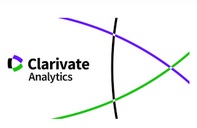Nueva evidencia sobre la Statistical Anxiety Scale (SAS)
Agencias de apoyo
- V Segles-VLC Campus convocatoria de Atracció del Talent 2011
Resumen
Nueva evidencia sobre la Statistical Anxiety Scale (SAS). Las asignaturas relacionadas con la estadística suelen tener problemas de rendimiento académico. La ansiedad se relaciona de forma negativa con el rendimiento y en particular, la ansiedad estadística puede ser un constructo clave en la mejora de la enseñanza de esta materia y afines. La Statistical Anxiety Scale (Vigil-Colet, Lorenzo-Seva y Condon, 2008) se creó con la pretensión de ser útil para predecir el rendimiento académico en estadística. Se fundamenta en tres dimensiones de ansiedad referidas a tres aspectos específicos: respecto al examen, cuando se pide ayuda en la comprensión de estadística y en el proceso de interpretación de resultados. Esta estructura de tres factores fue hallada en un primer momento por los autores de la escala y en una primera validación corroborada en estudiantes italianos y españoles. El presente estudio pretende añadir nueva evidencia sobre la fiabilidad y validez de la escala, empleando en el estudio de fiabilidad técnicas estadísticas robustas, y ampliando el estudio de la validez respecto a su principal criterio, el rendimiento académico, ya que no puede ser considerado sinónimo de autoeficacia.
Descargas
-
Resumen911
-
PDF494
Sobre Derechos de autor y Licencias, más detalles aquí.









